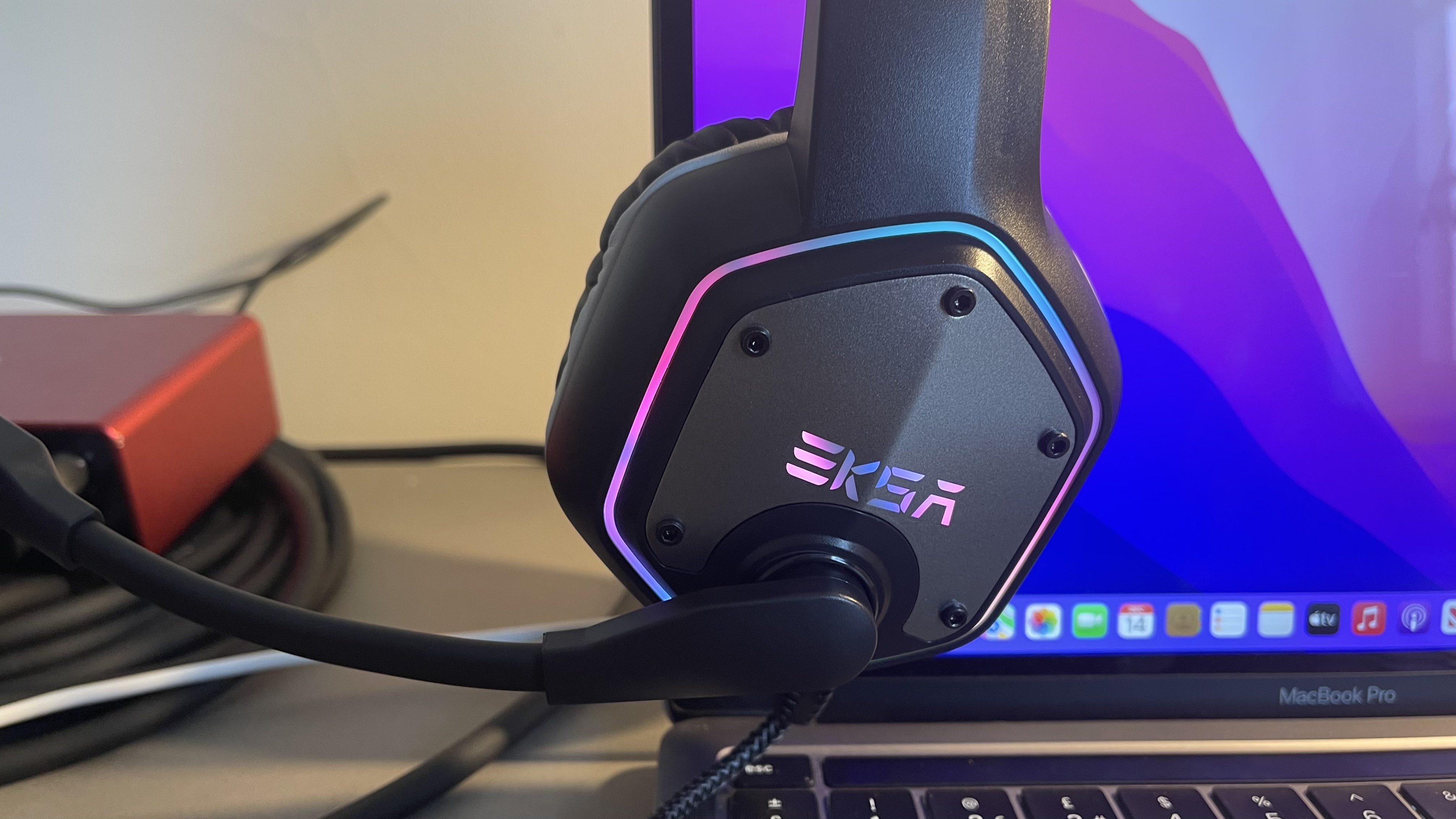GamesRadar+ Verdict
The EKSA E1000 headset is a solid budget option demanding a very low price tag, but it is held back by downsides that should give you serious pause for thought.
Pros
- +
High finish standard for the price
- +
7.1 surround is handy in a fight
Cons
- -
Bass response can be overwhelming
- -
Earth’s scratchiest mic sound
Why you can trust GamesRadar+
Corsair, Steelseries, Logi G, et al seem to refresh their product lineups every 17 minutes, keeping their names constantly in the gaming audio conversation by throwing massive r&d and marketing budgets at you. And that’s a good thing - it means better headsets for everyone. But did you ever cast your eye beyond the familiar names? Have you dared, in your bravest moments, to peruse the gaming headset market on Amazon?
If so, you may have been met with a sensation similar to travelling to an alternate universe. They’re recognisable as gaming headsets sure, but you don’t recognise a single brand name here. You’re in the Twilight Zone now, with only off-brand RGB strips lighting the way. It’s here, in this most mysterious corner of the market, where you might encounter the EKSA E1000.
Compatible with PC and PS4 and offering not just the obligatory RGB but also 7.1 virtual surround sound, the E1000’s promising a lot for a very reasonable $40/£30. So how does it reach that price point? What tradeoffs does it make, and do they matter? That’s what we’re here to find out.
Design & features
Well, I hope you like RGB. There’s a strip running around the outer ear in a hexagonal formation, and the EKSA logo’s also backlit with it. The finish around that logo is pretty pin-sharp, especially considering the price, and the rainbow-style program is attractive enough.
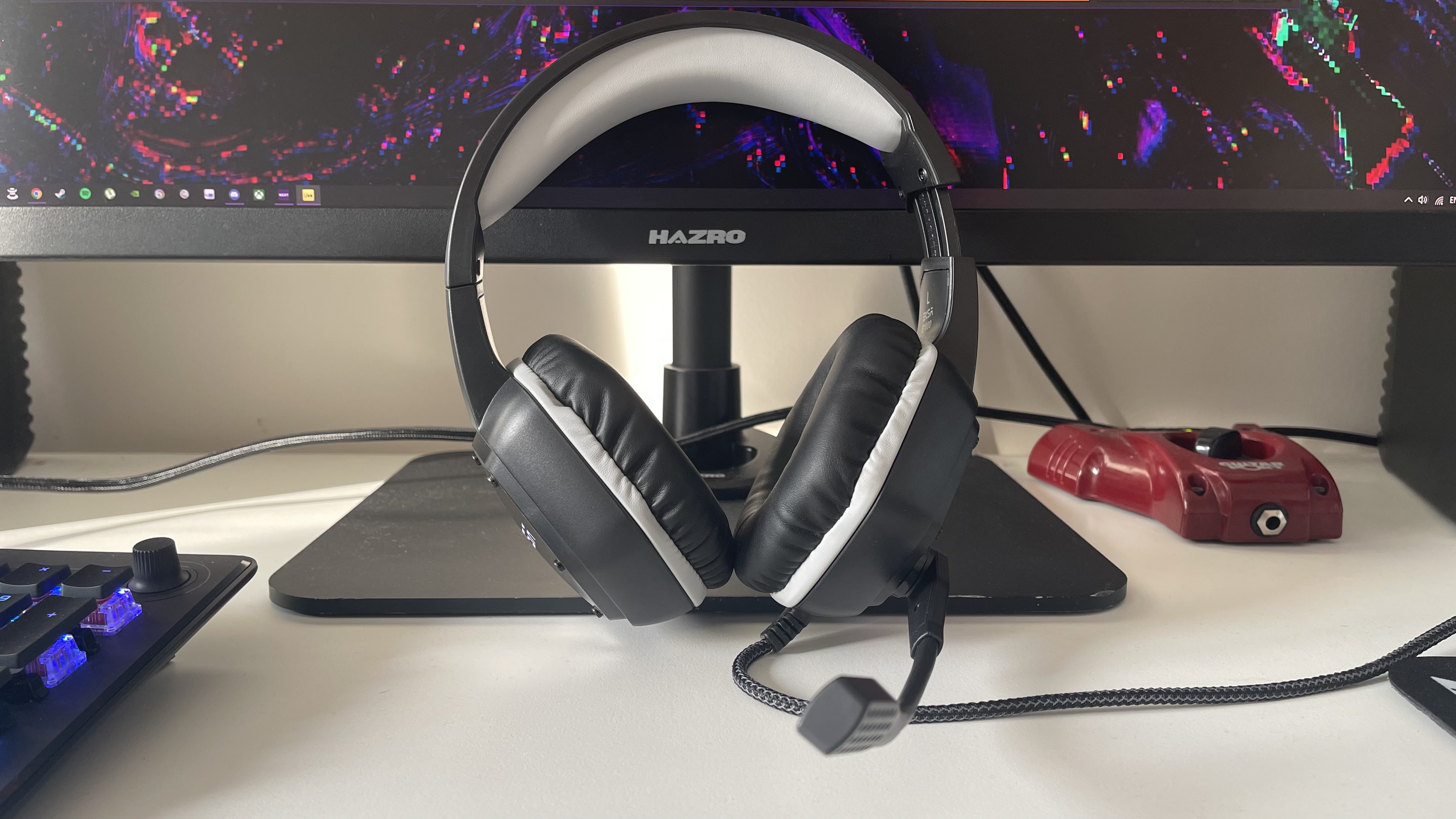
However, the RGB on this model can’t be programmed - or even turned off. This is definitely something to keep in mind before taking the plunge, particularly if you’re a slave to a particular colour scheme running through your gaming setup.
The outer design’s going for a ‘bolted on’ look, as though two heavy-duty metal plates have been forged onto the outside, but in fact, we’re looking at a 100% plastic construction here except for the inner headband frame itself, which looks and feels like brushed aluminium.
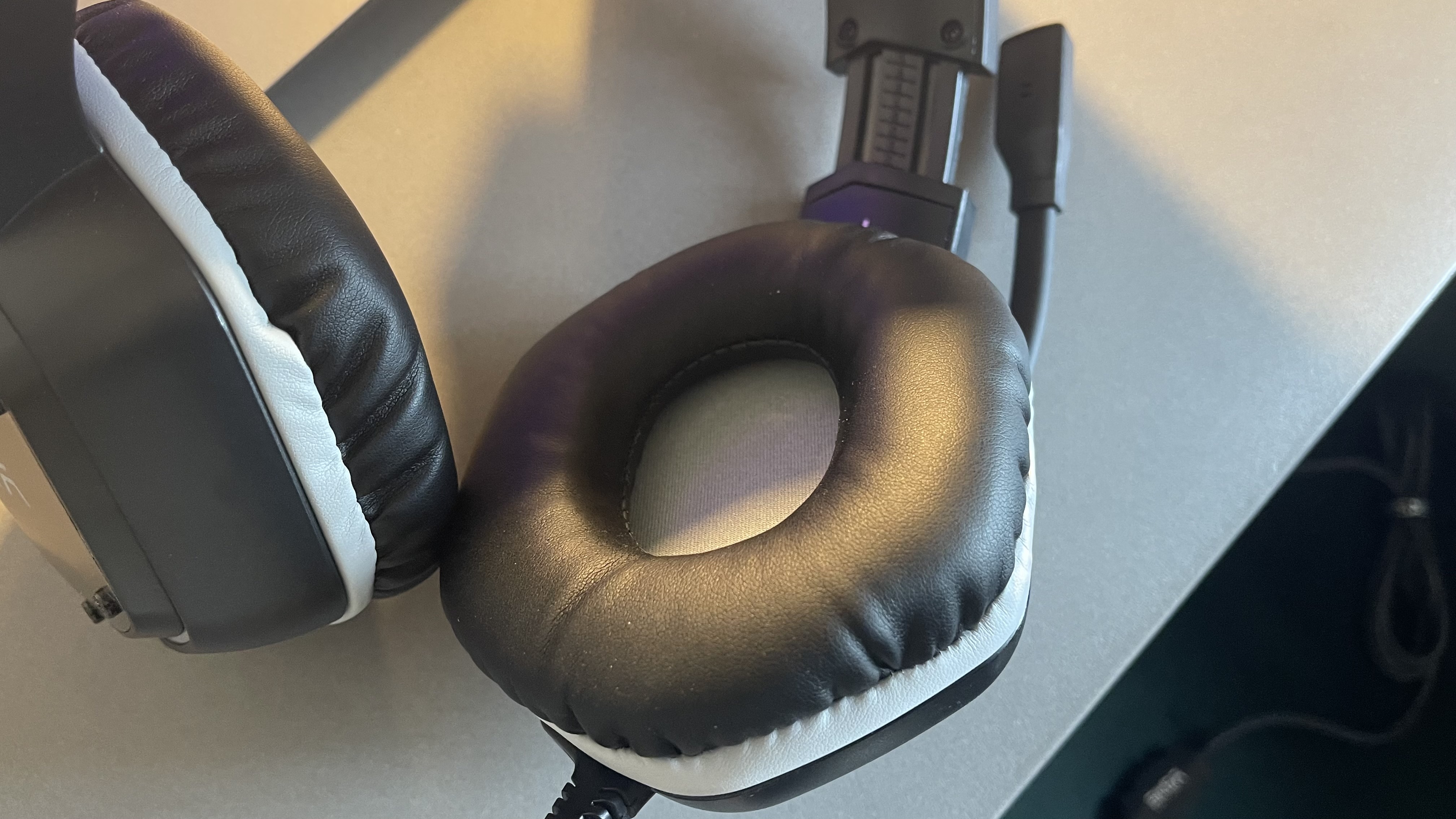
The finish is better than you’d expect for the price, and it’s elevated by a really chunky braided USB cable that looks like it could withstand an attack from a pair of garden shears. Don’t try that, though.
Unusually for modern gaming headsets though are the controls which are inline on the cable itself - nothing fancy, just a volume wheel and a mic mute switch. It’s not haute couture, but it does the job.
So far, EKSA’s low-cost option is holding up alright under scrutiny. On the spec sheet and in your hands, there are no glaring issues, only obvious but reasonable concessions to the price point.
Performance
The pleather earcups around the drivers on this model cover chunky foam cushions, but to the touch, you can tell these aren’t high-grade memory foam. The stitching and finish are all exemplary, but the materials they contain simply aren’t the comfiest.
Oddly, the openings around the drivers are actually quite small too, as the cushioned pads sit partially on your ears, rather than around them. That means on one hand there’s no danger of your ear pressing up directly against the driver, but on the other, you get the inherent discomfort of the headset’s clamping force being applied to your ear, rather than your head. Depending on the size of your ears, of course, your mileage may vary.
When you start digging into audio quality though, you start to get a sense of where these plucky cups’ limits are compared with their more established peers. In an online game setting, the 7.1 surround is very capable, creating a wide soundspace that makes it easy to pick out player positions from footsteps or gunfire.
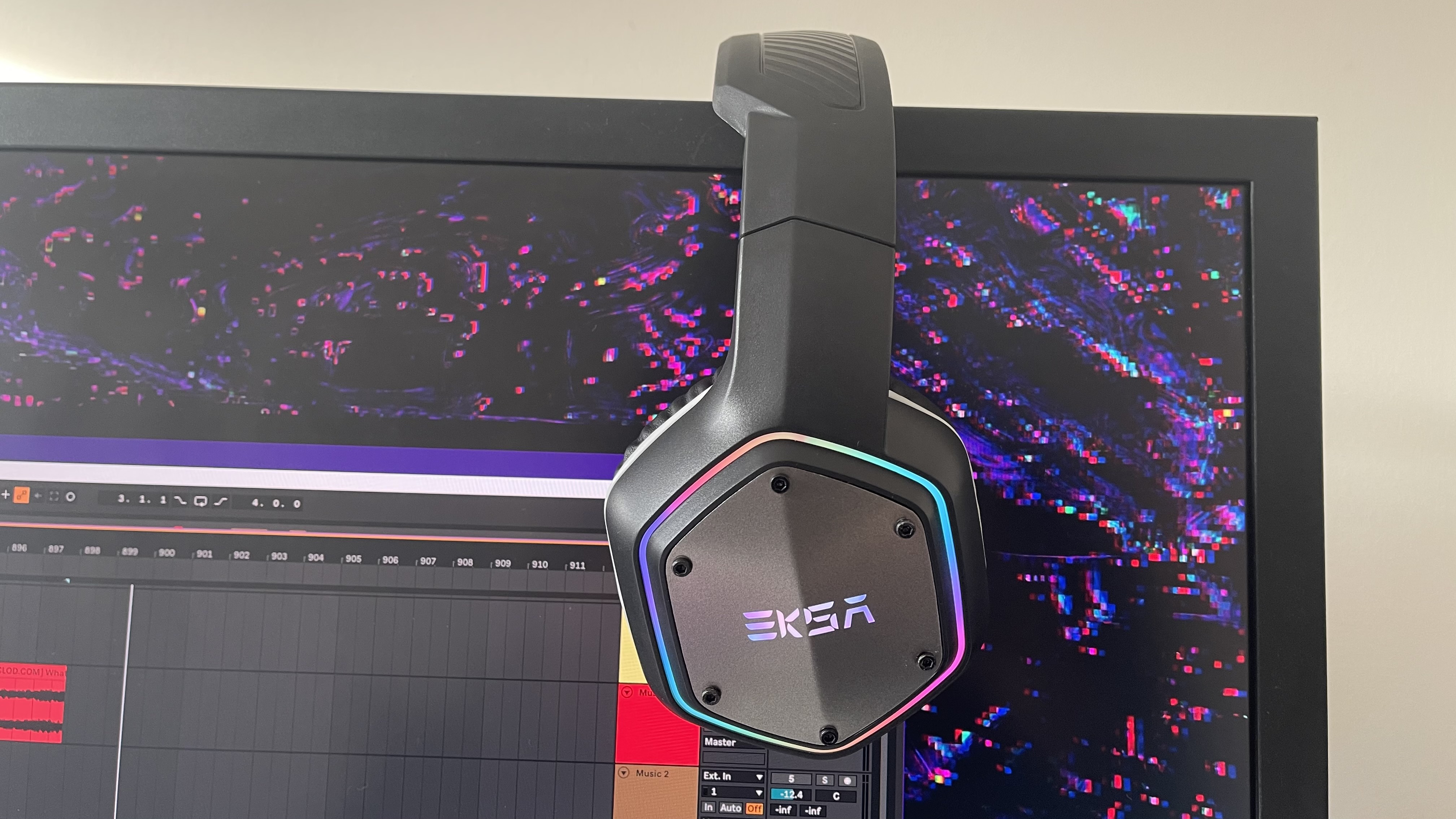
There are absolutely bags full of bass response, too. These certainly aren’t going to undersell a grenade going off in your vicinity, or the bombast of a large-scale battle. So for audio enjoyability, the E1000 has its moments.
However, the 7.1 surround is an always-on proposition, and in tandem with all that shouty low end, it can muddy up the sound pretty quickly. That means it’s a bit of a specialist - decent when you’re in the thick of a fight, less good when you want to relax with a podcast or pick out the finer details of the Civ VI score.
But the real Achilles heel lies in the E1000’s mic. I’ve never heard anything quite like it. Somewhere between a budget retailer's walkie-talkie circa 1996 and a taxi dispatch, it’s scratchy beyond belief and always sounds like the gain’s peaking, even when the mic capsule’s positioned well away from your mouth. To give credit where it’s due, the mic arm is really pliable and stays where you position it, but this output quality isn’t going to win you any friends on Discord.
It’s worth noting that other users have reported technical issues like electrical noise through one or both drivers, indicating shielding or wiring issues. Since this sample unit had no such issues though, it can’t be marked down on those grounds.
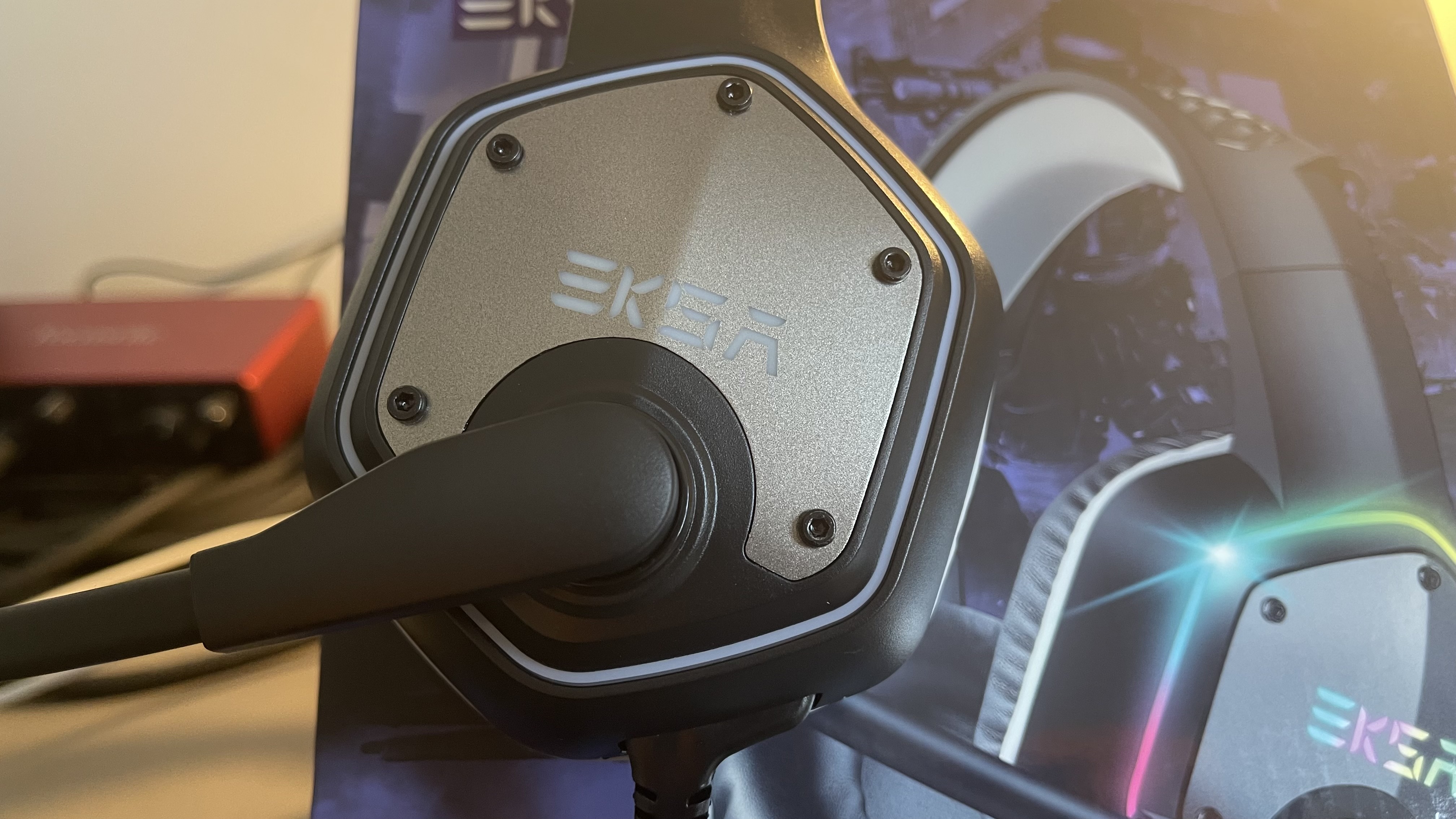
Overall - should you buy the EKSA E1000?
As much as one wants to root for the plucky outsider, this budget model’s genuine qualities are accompanied by downsides that should give you serious pause for thought before putting it in your basket.
With a snug fit favouring small ears and a bright, RGB-laden appearance, it’s perhaps best suited to younger gamers who’ll find the earcups more comfortable and aren’t yet afflicted with audiophile-like concerns over EQ response. Although the mic quality is a real letdown and there are marked comfort issues, it’s still a respectable headset at the price.
How we tested the EKSA E1000
This model’s compatible with PC and PS4 via USB connection, so we split our time between Steam games and that archaic black box of Sony’s yesteryear creations during our testing for this mic.
As always, a mix of game audio, podcasts, and music, all of different genres, were pumped through in order to pick out the drivers’ characteristics. Battle royales like PUBG are especially good for testing surround sound, since pinpointing players by audio is such a crucial mechanic.
For mic testing, we head into a Discord server for a chat and to harvest feedback, and also record directly into Ableton using the mic as the audio input source, so we can hear the raw audio isolated.
You can read more about how we test gaming headsets and how we make all our recommendations in the full GamesRadar+ Hardware Policy.
If you have the opportunity to spend a bit more money, and you want to go wireless, then check out our guides to the best wireless gaming headsets, as well as the top contenders for PS5 wireless headsets and Xbox Series X wireless headsets.
Phil Iwaniuk is a multi-faceted journalist, video producer, presenter, and reviewer. Specialising in PC hardware and gaming, he's written for publications including PCGamesN, PC Gamer, GamesRadar, The Guardian, Tom's Hardware, TechRadar, Eurogamer, Trusted Reviews, VG247, Yallo, IGN, and Rolling Stone, among others.
